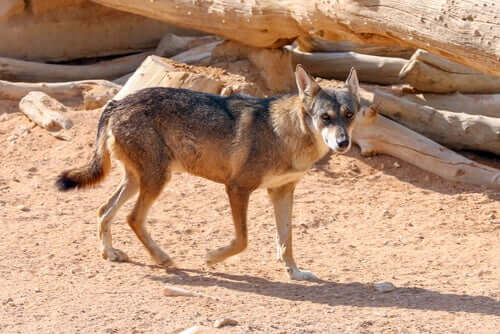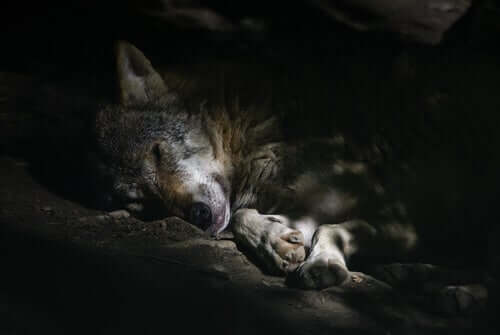The Arabian Wolf: Characteristics, Behavior, and Habitat

The Arabian Wolf is one of the smallest members of the Canis lupus species. As their name suggests, they live in the Arabian peninsula, although you can also find them in various parts of northern Asia. In this article, we’ll tell you more about their characteristics, behavior, and habitat. Read on to find out more!
Characteristics
Their scientific name is Canis lupus Arabs and they’re a subspecies of the gray wolf. Along with the Indian Wolf, they also happen to be the smallest, measuring just 26 inches tall and weighing just 44 pounds. They’re believed to be the result of a cross with domestic dogs, although this theory hasn’t yet been proven.
Although their heads are quite small in relation to their bodies, their ears are proportionally larger. This helps them to regulate their body heat, which is important when living in hot places like the desert.
Just like other canines, they have no sweat glands. Instead, they pant rapidly to control their body temperature, just like dogs.
Another curious feature of the Arabian Wolf is that the pads of their third and fourth toes are fused together. This leaves a different footprint to other members of this species of animal, apart from the African Wild Dog, which shares this feature.
They have a beige coat with gray shades which is short and thin in the summer, although it’s a little longer on the back to adapt to the heat of the sun. In the winter, the hair all over their body grows much longer.
Lastly, they have yellow eyes with black pupils, although some people have observed specimens with completely brown eyes.
Arabian wolf behavior and diet
Very little is known about this wolf’s habits and behavior. This is, firstly, because they try to avoid humans and, secondly, because their population is shrinking all the time.

Unlike other species of dogs, they can’t howl. They also don’t live in large packs. Instead, they hunt at night in pairs or teams of up to four members.
In the summer, they dig burrows in the sand to protect themselves and their young from the heat. They’re quite territorial and can fight over territory with other groups.
They’re mainly carnivorous animals, although they can show more omnivorous habits in certain areas. Their diet includes hares, small ungulates, rodents, Dorcas gazelles, wild goats, horse meat, carrion, cats, and sweet fruits.

If they’re not able to find any of these for several days, they can also eat fish, snails, or small birds. Nor will they hesitate to attack cattle or goats, which is why their population is shrinking as the result of being shot by Bedouins and farmers.
Habitat and conservation
In ancient times, this wolf lived in several areas of the Arabian peninsula. However, today, it only lives in small parts of Israel, Palestine, Iraq, Yemen, Oman, Jordan, and Saudi Arabia. You can sometimes find some groups in Egypt.
Human hunting or shooting had almost driven them to extinction, but thanks to captive breeding programs in the UAE and conservation areas in Oman and Israel, their numbers are gradually increasing.
Furthermore, hunting them is now banned in Oman, which has led to a slight recovery in their numbers and an expansion of their habitat. This is very important because they normally choose to live in areas with little human activity.